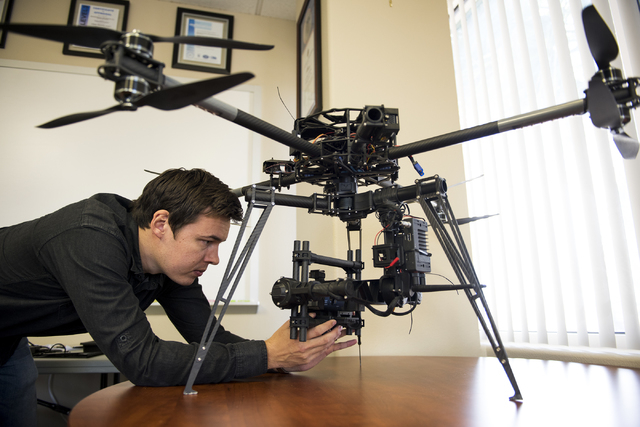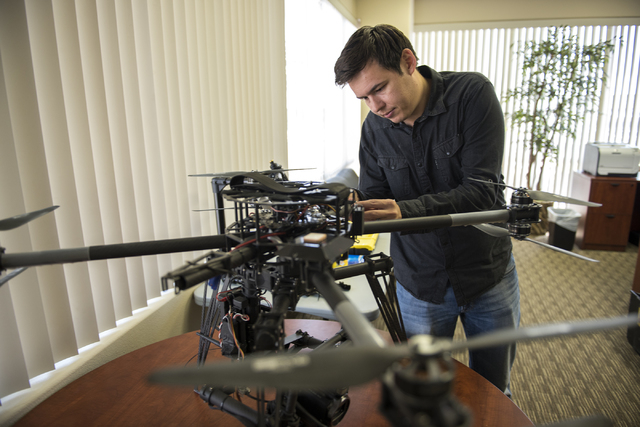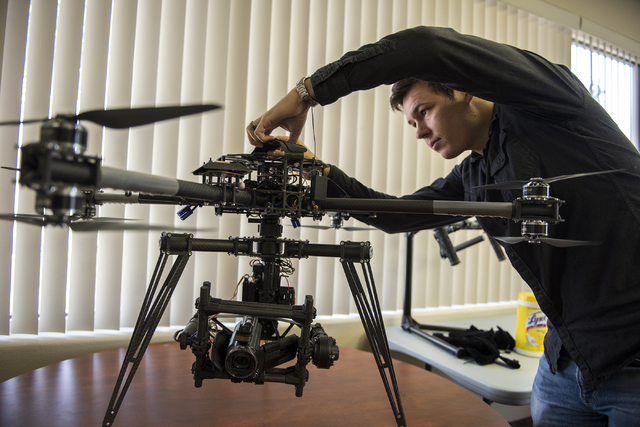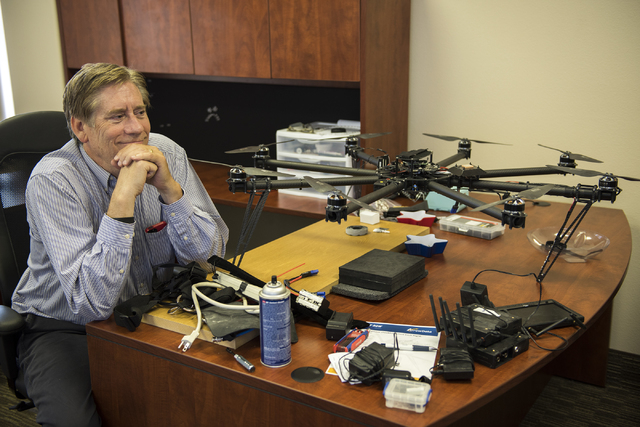





A Las Vegas-based company is the first, but likely not the last.
ArrowData, a data services and aerospace company based fueled by Alaskan Native community money, will be able to fly unmanned aircrafts for news gathering for clients that could include local and national media outlets. A Section 333 exemption from the Federal Aviation Administration, which ArrowData received late last month, will make this possible.
The organization’s exemption may be just the beginning of a new era of journalism, commercial uses for drones and FAA approvals.
And Ron Futrell, ArrowData’s media relations representative, hopes to see his company leading the way for the industry’s future needs.
ArrowData, founded in 2014, is still in its infancy, much like the drone industry itself.
In June 2014, British Petroleum staged the first commercial drone flight over land to take aerial survey photos over its Prudhoe Bay oil field in Alaska. Last September, the FAA granted the first set of Section 333 exemptions, allowing several film-related companies to take flight. To date, there have been nearly 300 exemptions granted by the FAA approval.
ArrowData’s exemption was the first given a Nevada company to use drones for commercial purposes. ArrowData is also the first organization in the U.S. to be approved to fly drones for electronic news gathering.
ArrowData is part of a larger organization — Barrow, Alaska-based Ukpeagvik Inupiat Corp. The corporation got its start in the early 1970s after the Alaska Native Claims Settlement Act was passed, giving the corporation nearly a billion dollars in seed money in a government settlement. That cash eventually helped form Ukpeagvik Inupiat.
Today, ArrowData is on a long list of subsidiaries held by Ukpeagvik Inupiat’s holding companies.
Vice President James Fleitz leads ArrowData. Michael Bradshaw, who had been president, left the company.
ArrowData’s staff, most of whom are military veterans, aim to help news outlets get the same approval letter, allowing them to fly their own drones.
Futrell said his ideal scenario would be to have a news outlet’s photographer — or pilot — from a local or national organization, trained locally by ArrowData.
Futrell said the future pilots “will come here with us, have them train here on their aircrafts so that they can do it safely, properly and understand the ethics involved so that they can go out and fly professionally for their news outlet.”
Futrell sees a long-term place for ArrowData.
“Some people have said that you’re just building an industry that you’re just casting off to people on their own,” Futrell said. “No, you’re always going to come back to us for new technology; we’re going to tell you what the latest bird is.”
Futrell has dubbed these new potential candidates aerojournalists. He said it’s an easy term that the industry could recognize across several platforms: Web, TV and print.
“If you’re an aerojournalist, you know right away what that means,” Futrell said. “You’re a journalist that’s flying an aerial asset to be able to get your photos.”
When these new aerojournalists graduate, they will fly under ArrowData’s FAA exemption. Futrell said this is possible because new pilots will have met the same qualifications that ArrowData’s pilots and camera operators have.
ArrowData can also fly for news outlets that request it.
“Initially, we can provide the flying for media, but our business model is also to train, equip and certify them to safely operate on their own,” Futrell said.
ArrowData’s consultancy package will come in four parts:
▶ Filing for the FAA’s Section 333 exemption on a media outlet’s behalf
▶ Finding the best aircraft to suit the customer’s needs
▶ Training for an organization’s pilots and camera operators
▶ And assisting with finding insurance for their new equipment
No pricing has been set for the industry package. But the resale price on ArrowData’s modified drone itself was estimated to be $40,000 to 50,000, depending on the client’s needs.
The local market is apt to move.
“We have talked with local stations,” Futrell said. “So far, they are interested in us flying for them with our exemption, along with training their pilots.”
Some people the industry see the FAA’s regulations still limiting the technology’s adoption.
“We’d have to have somebody with a pilot’s license,” said Matthew Adams, chief photographer at KLAS-TV, Channel 8 Las Vegas. “Once they lift those restrictions, we would do it yesterday.”
ArrowData’s exemption also requires the drone operator to have a valid U.S. driver’s license and a current FAA airman medical certificate.
If the FAA’s grip were to loosen, Adams sees the industry acceptance soaring.
“Once it opens up to all journalists, not just people who have been granted permission, it’s going to be a major change,” Adams said.
ArrowData’s exemption also limits the type of aircraft that can be used. The FAA exemption allows ArrowData is authorized to use only the CineStar 8 Okto XL to fly missions.
FAA regulations limit how far a drone can be flown away from its user; current regulations require the pilot to be within line of sight.
But Futrell sees lesser restrictions in the future.
ArrowData production manager Jason Daub said the control range on their CineStar 8 is 2,000 meters, with a 2,000-foot range on the camera signal.
Other models on the market can already reach 4 kilometers on drone range, Daub added.







